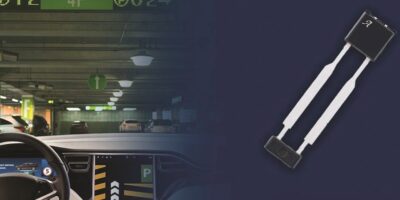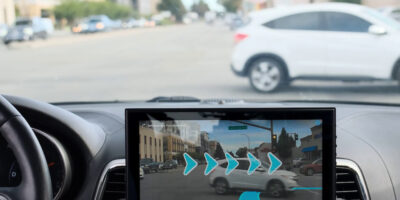Believed to be the first high-resolution giant magnetoresistance (GMR) wheel speed and distance sensor, the A19360 will help vehicle manufacurers achieve levels 3, 4 and 5 automation in passenger vehicles, says Allegro Microsystems.
The A19360 wheel speed and distance sensor provides the signal resolution and reliability required for advanced levels of automation in passenger vehicles and mobility-as-a-service applications, continued the company.
According to a recent report by consulting firm, Strategy, the first passenger vehicles with level 3 (conditional automation) capabilities should be generally available by the end of 2022, and level 4 (high automation) capabilities available in people-mover applications by 2025. By 2030, vehicles incorporating levels 3, 4 and 5 (full automation) capabilities are expected to make up 20% of the total market in Europe, 12% in the US, and 11% in China.
The A19360 sensor is designed for SAE J3016 levels of automation 3, 4 and 5, and helps to safely enable features such as park assist, fully autonomous valet parking and traffic jam assistance with 4x better positional measurement. It can even improve autopilot functionality and low-speed control in dense environments, claims the company.
The A19360 provides high-resolution information to automotive systems by generating extra output events per magnetic cycle with a protocol that’s compatible with electronic control units (ECUs). Automated and autonomous vehicles require superior wheel rotation information for accurate low-speed control.
The A19360’s eight-event per magnetic cycle mode provides an increment for every approximately 5mm of tyre roll. It also includes a four-event per magnetic cycle mode that doubles the number of outputs per magnetic cycle (compared to a normal wheel speed sensor). This allows designers to halve the number of poles on in-wheel ring magnets to save costs or increase the air gap while still obtaining the same number of increments per revolution.
The A19360 was developed for ISO 26262 ASIL B(D), and is built on Allegro’s monolithic GMR technology with low jitter and large air gap capabilities. The company’s SolidSpeed Digital Architecture is claimed to provide the widest dynamic range of operating air gap and highly adaptive performance that eliminates flatlining due to thermal drift and system dynamics.
The A19360 is available in a two-pin SIP package (suffix UB) that is lead- (Pb) free, with tin lead frame plating. The UB package includes an IC and protection capacitor integrated into a single over-moulded package, with an additional moulded lead-stabilising bar for robust shipping and ease of assembly.







